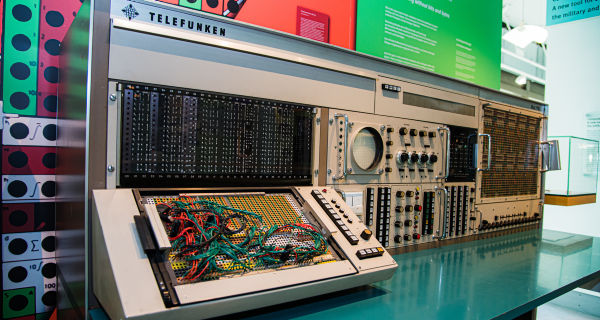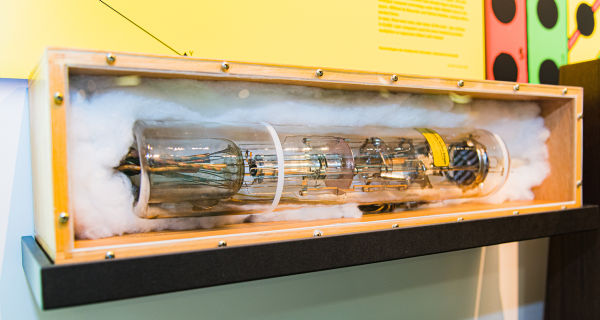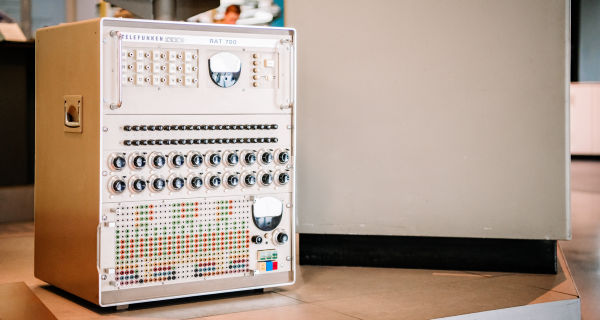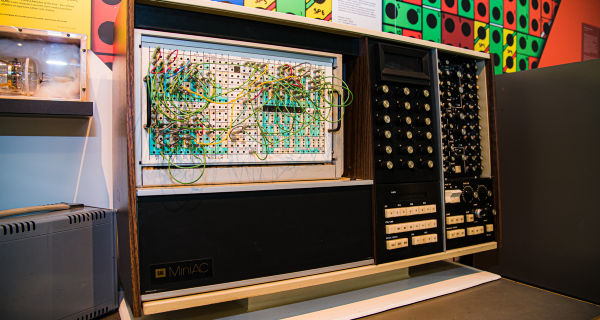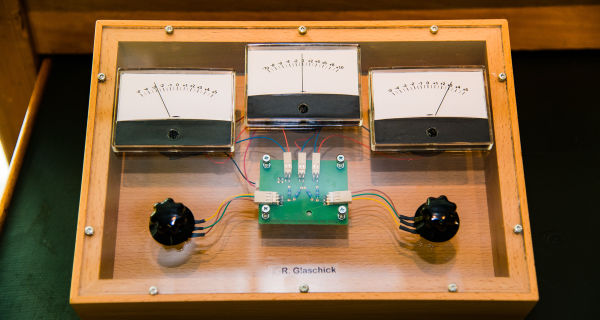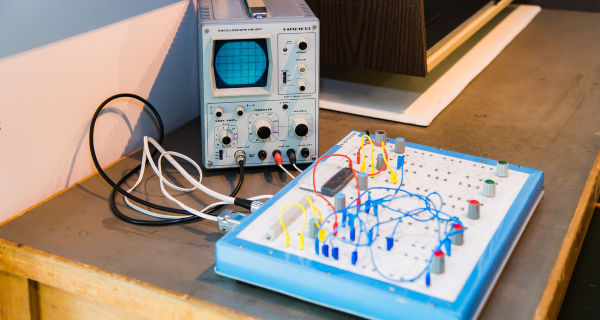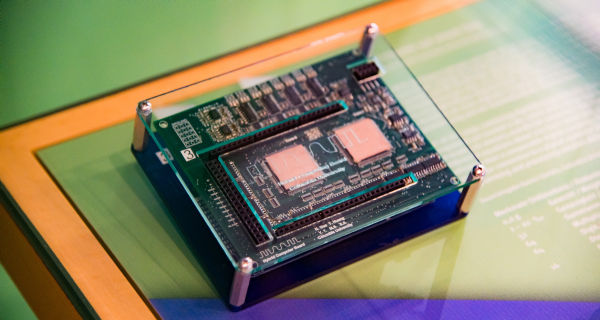This exhibition area carries visitors through a seemingly old world that is becoming relevant again today.
Analogue computers filled countless research laboratories in the past and were significantly more powerful than their digital counterparts, especially for applications in the natural sciences and technology. With the massive jump in digital computers’ performance and their easier operability, analogue computers began to gradually disappear. But today they’re experiencing a renaissance.
Like slide rules, analogue computers use continuous values rather than digital numbers to perform calculations. Users can change the parameters during the calculation process and immediately see the results. Analogue computers have become interesting again for the future because they consume much less energy for certain applications such as artificial intelligence.
The HNF features a Telefunken RA 770 from 1971, one of the most powerful analogue computers ever built. To deepen understanding of this technology, the exhibition includes another Telefunken computer, a small educational computer, a school computer from Paderborn, an adding machine and a multimedia station. HNF also presents current developments such as analogue chips.
